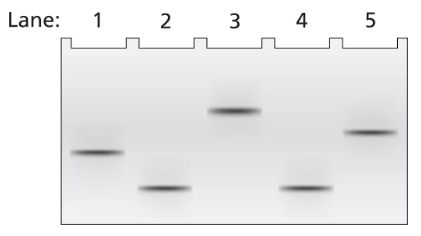Metagenomics studies generate very large amounts of sequence data. Provide examples of genetic insight that can be learned from metagenomics.
Table of contents
- 1. Introduction to Genetics51m
- 2. Mendel's Laws of Inheritance3h 37m
- 3. Extensions to Mendelian Inheritance2h 41m
- 4. Genetic Mapping and Linkage2h 28m
- 5. Genetics of Bacteria and Viruses1h 21m
- 6. Chromosomal Variation1h 48m
- 7. DNA and Chromosome Structure56m
- 8. DNA Replication1h 10m
- 9. Mitosis and Meiosis1h 34m
- 10. Transcription1h 0m
- 11. Translation58m
- 12. Gene Regulation in Prokaryotes1h 19m
- 13. Gene Regulation in Eukaryotes44m
- 14. Genetic Control of Development44m
- 15. Genomes and Genomics1h 50m
- 16. Transposable Elements47m
- 17. Mutation, Repair, and Recombination1h 6m
- 18. Molecular Genetic Tools19m
- 19. Cancer Genetics29m
- 20. Quantitative Genetics1h 26m
- 21. Population Genetics50m
- 22. Evolutionary Genetics29m
15. Genomes and Genomics
Functional Genomics
Problem 18d
Textbook Question
A 3.5-kb segment of DNA containing the complete sequence of a mouse gene is available. The DNA segment contains the promoter sequence and extends beyond the polyadenylation site of the gene. The DNA is studied by band shift assay, and the following gel bands are observed.

Match these conditions to a specific lane of the gel.
3.5-kb fragment plus RNA polymerase II
 Verified step by step guidance
Verified step by step guidance1
Step 1: Understand the experimental setup. A band shift assay is used to study protein-DNA interactions. When RNA polymerase II binds to the DNA fragment, it alters the mobility of the DNA in the gel, causing a shift in the band position.
Step 2: Analyze the gel image provided. The gel contains five lanes, each showing bands corresponding to different experimental conditions. The lanes are numbered 1 through 5.
Step 3: Match the condition '3.5-kb fragment plus RNA polymerase II' to the appropriate lane. Look for a lane where the band is shifted compared to the control lane (which contains only the 3.5-kb DNA fragment without RNA polymerase II). This shift indicates the binding of RNA polymerase II to the DNA.
Step 4: Identify the control lane. Typically, the control lane will show the unaltered position of the 3.5-kb DNA fragment. Compare the band positions in the other lanes to this control to determine which lane shows the interaction with RNA polymerase II.
Step 5: Confirm the lane where the band is shifted upward or has altered mobility, as this indicates the presence of RNA polymerase II bound to the DNA fragment. This lane corresponds to the condition described in the problem.
 Verified video answer for a similar problem:
Verified video answer for a similar problem:This video solution was recommended by our tutors as helpful for the problem above
Video duration:
2mPlay a video:
Was this helpful?
Key Concepts
Here are the essential concepts you must grasp in order to answer the question correctly.
Promoter Sequence
The promoter sequence is a region of DNA located upstream of a gene that initiates transcription. It serves as the binding site for RNA polymerase and transcription factors, facilitating the assembly of the transcription machinery. Understanding the promoter's role is crucial for analyzing gene expression and the effects of regulatory elements.
Recommended video:
Guided course

Sequencing Difficulties
RNA Polymerase II
RNA polymerase II is an enzyme responsible for synthesizing messenger RNA (mRNA) from a DNA template during transcription. It plays a vital role in gene expression by transcribing protein-coding genes. The interaction between RNA polymerase II and the promoter is essential for initiating transcription, making it a key focus in studies of gene regulation.
Recommended video:
Gel Electrophoresis
Gel electrophoresis is a laboratory technique used to separate DNA, RNA, or proteins based on their size and charge. In this method, samples are loaded into a gel matrix and subjected to an electric field, causing molecules to migrate. The resulting bands can be analyzed to determine the presence and size of specific fragments, which is critical for interpreting results in molecular biology experiments.
Recommended video:
Guided course

Proteomics
Related Videos
Related Practice
Textbook Question
461
views



